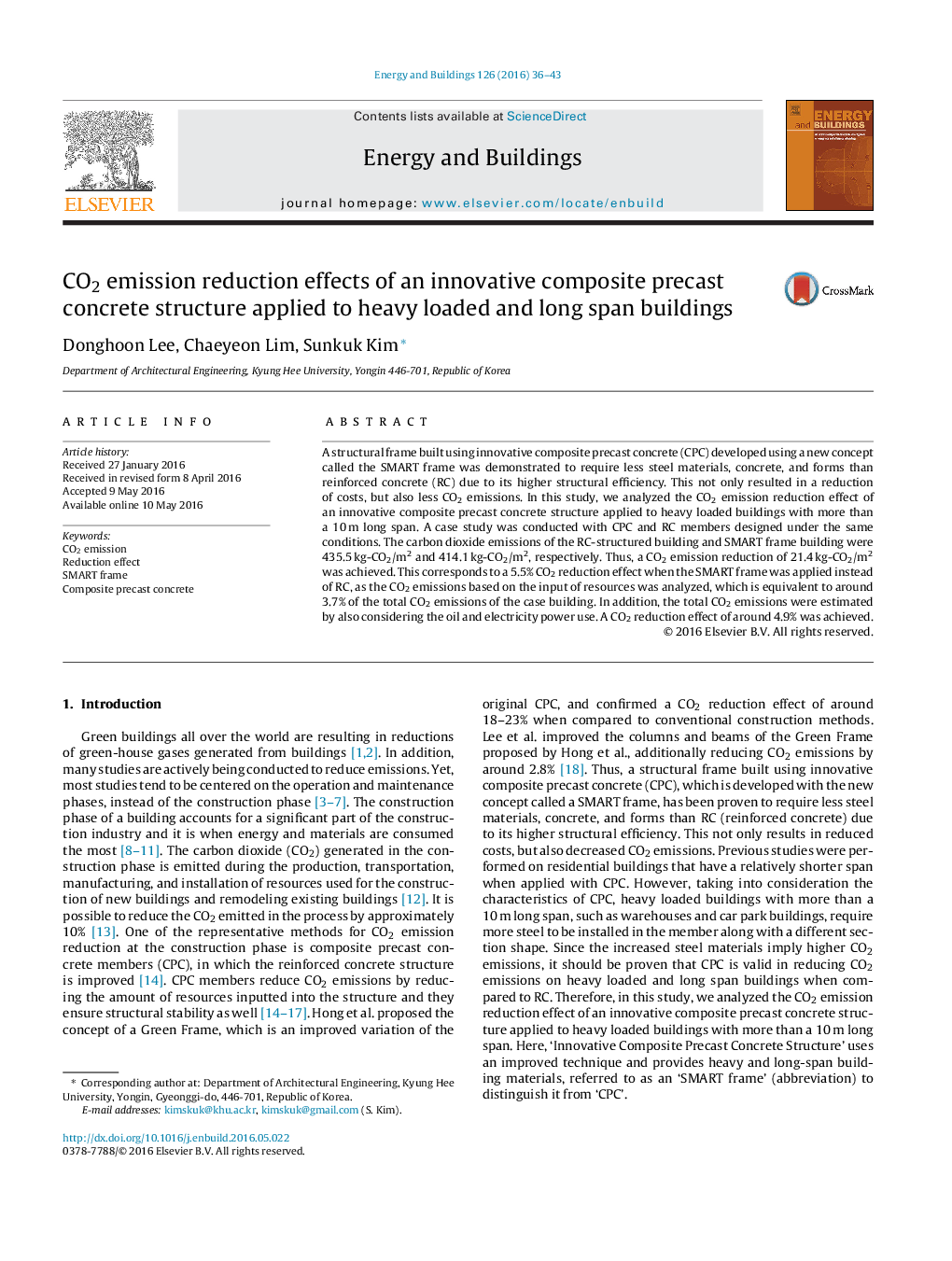| کد مقاله | کد نشریه | سال انتشار | مقاله انگلیسی | نسخه تمام متن |
|---|---|---|---|---|
| 261913 | 504006 | 2016 | 8 صفحه PDF | دانلود رایگان |

• The CO2 emission reduction effect of an innovative composite precast concrete structure applied to heavy loaded buildings is verified.
• The CO2 emission of the RC-structured building was 435.5 kg-CO2/m2, and that of the SMART frame building was 414.1 kg-CO2/m2.
• There was 5.5% CO2 reduction effect when SMART Frame was applied instead of RC.
A structural frame built using innovative composite precast concrete (CPC) developed using a new concept called the SMART frame was demonstrated to require less steel materials, concrete, and forms than reinforced concrete (RC) due to its higher structural efficiency. This not only resulted in a reduction of costs, but also less CO2 emissions. In this study, we analyzed the CO2 emission reduction effect of an innovative composite precast concrete structure applied to heavy loaded buildings with more than a 10 m long span. A case study was conducted with CPC and RC members designed under the same conditions. The carbon dioxide emissions of the RC-structured building and SMART frame building were 435.5 kg-CO2/m2 and 414.1 kg-CO2/m2, respectively. Thus, a CO2 emission reduction of 21.4 kg-CO2/m2 was achieved. This corresponds to a 5.5% CO2 reduction effect when the SMART frame was applied instead of RC, as the CO2 emissions based on the input of resources was analyzed, which is equivalent to around 3.7% of the total CO2 emissions of the case building. In addition, the total CO2 emissions were estimated by also considering the oil and electricity power use. A CO2 reduction effect of around 4.9% was achieved.
Journal: Energy and Buildings - Volume 126, 15 August 2016, Pages 36–43